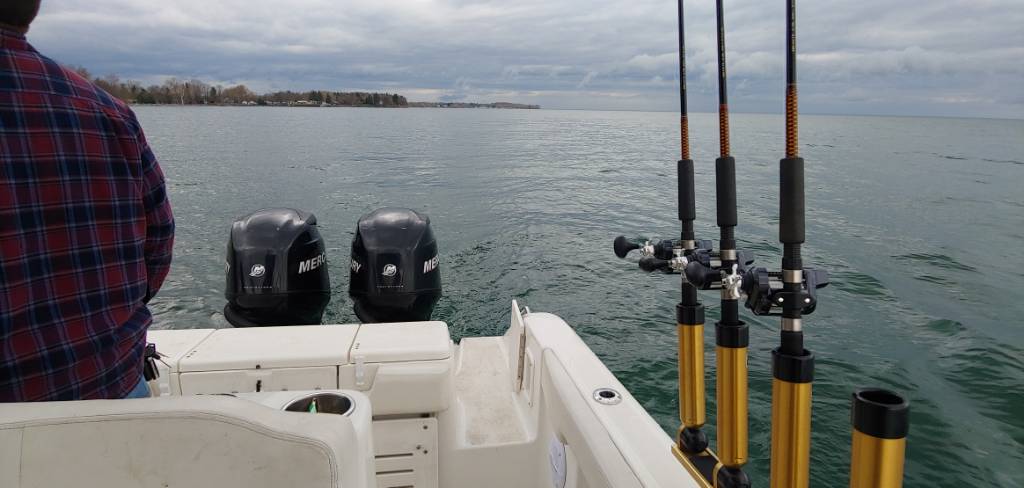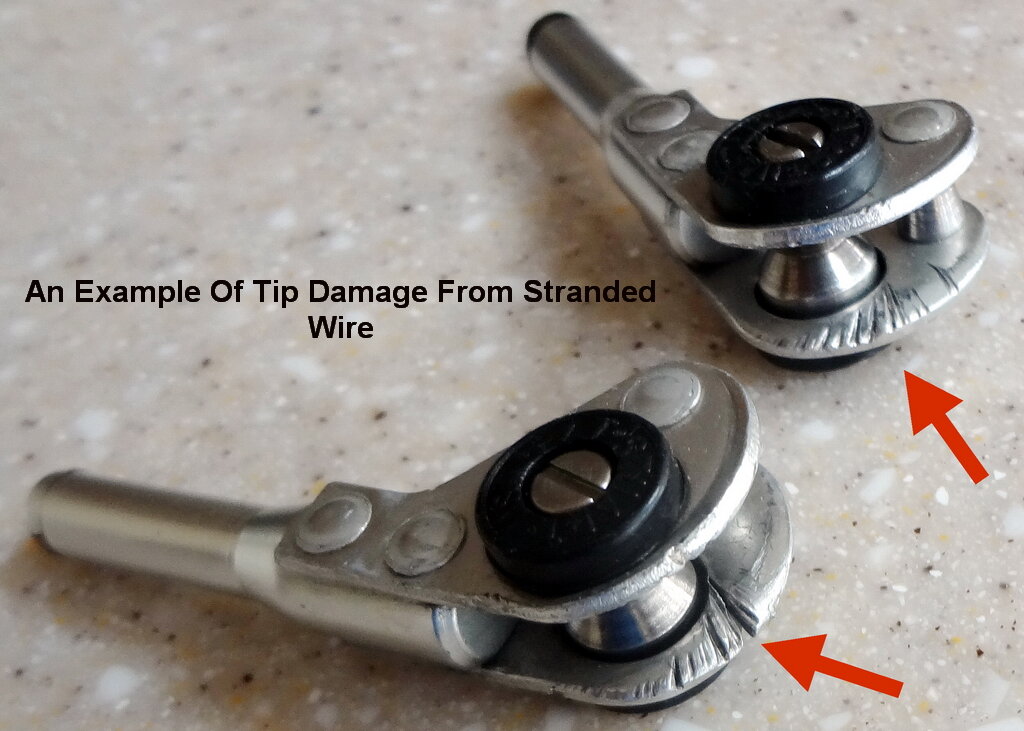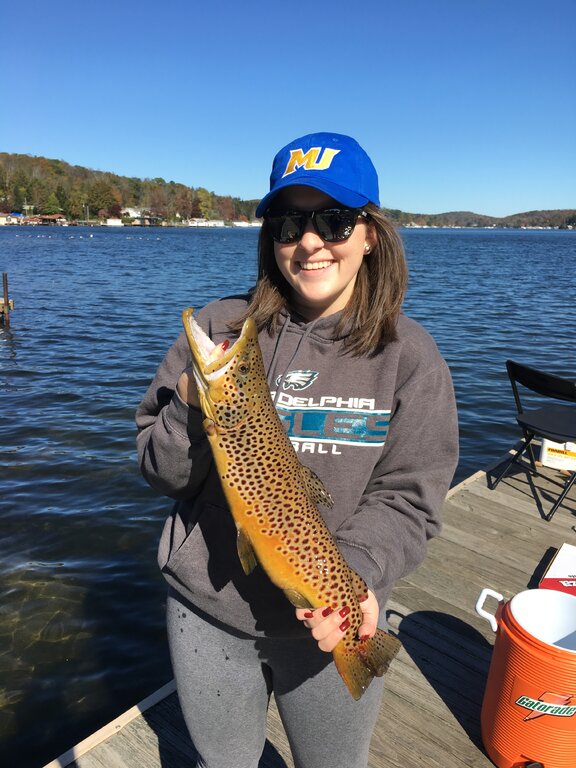-
Posts
784 -
Joined
-
Last visited
Content Type
Profiles
Forums
Events
Gallery
Store
Everything posted by John E Powell
-
An old e-glass rigger stick is very flexible. The materials I have available today for internal repairs are all higher modulus and while repairable if it’s a clean break, you probably won’t be happy with the change in the rod after it’s repaired. If the breaks are close to the tip and you just want to shorten it at that point, you’ll need a new larger tip and to do it right you’ll probably need to relocate a guide or two. In all honesty, it’s not worth the time and expense to have me repair it and also pay to ship to me and back unless there’s some intangible sentimental value associated with the rods that outweigh economic value. Sent from my iPhone using Lake Ontario United
-
Hi everyone. I’m available to observe for your team. I’m experienced, reliable, punctual, and professional. I will travel east to Oak Orchard area and west to Toronto area for events. I can be reached initially by message through LOU (if you don’t already have my number). Update: I have paired up with teams for both Scotty events at Bluffers Park, and the Wilson Harbor Invitational.
-
Your Whaler needs a OEM Mills Canvas Bimini. They made the originals and have all the correct exact interchangeable fit parts. You can start with the Bimini and add on later without having to have existing canvas reworked to match the new. https://millscanvas.com/whaler-canvas/ Sent from my iPhone using Lake Ontario United
-
More important than the HP on a trolling motor is the gear case gear ratio. The lower gears of a trolling motor allow them to turn props with larger surface areas. Large props spinning at slower speeds develop more thrust. Lower gears also allow the engine to turn faster and develop more usable hp. It’s a win win scenario. If you think of this in extremes, consider a freighter going down the lake. The prop is gigantic but it rotates relatively slowly. A 9.9 trolling motor with low gearing is completely adequate to push the boat. A 15 may produce more charging amperage at wide open throttle, but if it runs an even bigger prop than the 9.9 it will operate at lower rpm and may not actually generate any more real world charging at normal operating rpm trolling around the lake. As to thrust at wot through big waves, if both engines have similar max rpm, gearing, and props, and both can wind up to full rpm then there’s no thrust advantage with the 15 over the 9.9. There would have to be a difference in gearing and/or prop. Either way though, once you reach the hull displacement speed and the bow wave begins to pass behind the transom and the transom begins to squat no additional power is realistically useful unless it’s enough power to push the boat up the backside of the bow wave and begin to plane. Sent from my iPhone using Lake Ontario United
-
If you decide to add foam, make sure it is a “closed cell” foam and not “open cell” foam. Open cell foam will absorb water more easily over time, closed cell foam better resists absorbing water though it will still take on some water over time if it’s someplace that can get wet. Sent from my iPhone using Lake Ontario United
-
Does anyone know of a good Diesel Tech near Wilson? I looked online and Volvo only lists certified marine techs and the closest is well over the border into Canada. It doesn’t look like there’s a single “certified” Volvo diesel tech anywhere along the south shore. Was considering a boat that was repowered, but if you can’t get it routine maintenance and minor troubleshooting done down the road then that doesn’t make much sense. Sent from my iPhone using Lake Ontario United
-
Unfortunately, I’d have to agree with the poster above recommending avoiding placing prepaid special orders with them. Sent from my iPhone using Lake Ontario United
-
I’ve been using 19 strand for both mag inside divers and regular size outside divers for years now. It has been improved a lot from the first wire that was available. 19 strand, regular ceramic guides and a Twili tip is the best setup. Rollers are totally unnecessary and I would argue the point that they’re actually less desirable for multiple reasons. Cut the factory tip off with a file or fine tooth saw blade, something that won’t generate heat and soften the rod blank’s epoxy. This is very easy to do, just cut the tip off right below the bottom of the metal tube and unwind the trim thread down to a clean blank. An exacto knife or single edge razor blade will be helpful. Sent from my iPhone using Lake Ontario United
-

Advice on first “real” lake O boat (Penn Yan 212)
John E Powell replied to Jto97's topic in Open Lake Discussion
Have a leak down test performed on the engine, not just a compression test as part of the mechanical assessment. Get a current survey done. Make an rescindable offer pending positive outcome on mechanical assessment, survey, and sea trial. Great choice for a first real Lake O capable boat without spending a lot of cash. Sent from my iPhone using Lake Ontario United -

Wanted Advice / Opinion Cisco versus Big Jon Planer reels manual.
John E Powell replied to Trorun's topic in Classifieds - Buy, Sell, Trade or Rent
As per Cisco owner, even with new motors do not bring in the really big boards like the Amish while trolling. The boat should be in neutral or turn towards each board and bring them in one at a time. If you drag in the big boards while trolling you will eventually burn up the new more capable motors, it will likely take longer to happen though. Sent from my iPhone using Lake Ontario United -

Wanted Advice / Opinion Cisco versus Big Jon Planer reels manual.
John E Powell replied to Trorun's topic in Classifieds - Buy, Sell, Trade or Rent
Yes, friends boat is running new motors, but as per Cisco owner you’re still not supposed to drag in the really big boards, like the Amish boards, while trolling. Boat in neutral or turn into each board one at a time to take the pressure off. Sent from my iPhone using Lake Ontario United -

Wanted Advice / Opinion Cisco versus Big Jon Planer reels manual.
John E Powell replied to Trorun's topic in Classifieds - Buy, Sell, Trade or Rent
Since it’s good to hear the good and bad, I’ll share some bad. Cisco, like many things in life, are not bulletproof. A set of Amish boards burnt up the motors on a friend’s boat in couple years of weekend fishing. You can’t use them like a rigger and just haul in a set of the really big boards at trolling speed, they will fail. Having said that, I still intend on buying a set for my next boat because I think it’s a great product at a decent price. If you’re going to use boards that pull hard, you should put the boat in neutral or turn towards each board and bring them in one at a time. Sent from my iPhone using Lake Ontario United -
Send me a message, don’t want to hijack the post. Sent from my iPhone using Lake Ontario United
-
If you’re handy and know how to retie on a guide, the talora’s guide spacing allows you to assemble the rod tip upside down and create a spiral wrapped diver rod by turning the 2nd guide 60 degrees clockwise around the blank and the 3rd 120 degrees clockwise. A spiral wrapped talora is about as close as you can get to a custom diver rod. I’ve modified many taloras like this. Sent from my iPhone using Lake Ontario United
-
I’m looking for ideas on how best to set up a 24’ twin inboard boat. I’d like to bracket mount a 10-15 hp trolling motor down the centerline with helm and autopilot steering and full remote controls controls - start, shift, throttle, and power tilt. I’m also leaning toward an iTroll for fine throttle control at the helm. I want gps interfaced autopilot steering while underway both on the mains and when running the trolling motor. Im also open to both fixed and hydraulic power lift brackets for ease of use and maintenance for the outboard. I’m more interested in an approach that will perform flawlessly in all scenarios rather than saving a few bucks here or there and sacrificing aspects of functionality. While not an open checkbook scenario, I do expect to commit to a serious investment of funds to get what I want. I’d like to hear from people who have done something similar or who have experience with autopilot installs and/or upgrading steering systems. Electronics install will all be new so there’s no need to integrate with older electronics. I’m open to any brand platform of components, but would like to avoid mixing brands that need to talk to each other. Sent from my iPhone using Lake Ontario United
-
I’m not going to share an opinion on the rod/reel choices, but I’d recommend the newer weighted steel lines over copper. Sink rates are effectively very similar, but it’s so much easier to work with than copper. I’d recommend a 300 and a 400 if you are doing just two. Sent from my iPhone using Lake Ontario United
-
I think it’s Toromont cat in Canada. I do think the Batavia dealer does marine work also. Not sure if they travel. Sent from my iPhone using Lake Ontario United mobile app
-
I think the closest certified cat marine diesel guy at the west end is on the Canadian south shore. Sent from my iPhone using Lake Ontario United mobile app
-
Two riggers, one rod each. 1-2 wire divers per side (reg and mag size for deep and slide diver for upper), 1 weighted steel per side (rather than copper) off big boards or lead core (when fish are shallower) off inline boards. Keep in mind that often 2 well run rigger rods will outfish 4 riggers and 8 rods that are overpowering your presentation. Spreading out a pattern with a couple rods each riggers, divers, and weighted long lines will up your catch on big kings that are often put off by two much gear being pulled through a small area of water. Sent from my iPhone using Lake Ontario United
-
Fran at Brobiel (spelling?) in Buffalo. Sent from my iPhone using Lake Ontario United
-
Not every ficht had problems, the ones that did died a long time ago. Treat it like any other nearly 20 year old outboard when making a decision to repair or replace. Sent from my iPhone using Lake Ontario United
-
The 19 strand is one way, there’s also bulk sources for 300’+ lengths. ________________________ Owner John's Custom Rods Specializing in building Great Lakes trolling rods since 1979 First place winner of the 2016 World Rod Building Challenge
-
If I was going to do just one “copper” rod it would be a weighted steel (rather than copper) at 350’ Sent from my iPhone using Lake Ontario United
-

best knot for wire
John E Powell replied to dry net's topic in Questions About Trout & Salmon Trolling?
You didn’t specify 7 or 19 strand wire. If you’re using 7-strand wire, I think most people use crimp. Make a loop through snap swivel eye and then fit swivel through loop and pull tight working the wire loop back so you end up with double wire from crimp to snap. Crimp after wire loop is pulled tight. If you’re using 19 strand double the line making a loop. Fold the doubles line onto itself and feed the end loop through the double loop (you’re doing an overhand knot). Slide to adjust the size and pull the overhand knot tight. Add the snapswivel as described above. ________________________ Owner John's Custom Rods Specializing in building Great Lakes trolling rods since 1979 First place winner of the 2016 World Rod Building Challenge -
If you’re wondering if Amish composite boards will pull long coppers well, we run two long coppers on them and the tow line barely bends where the release sits. Sent from my iPhone using Lake Ontario United





